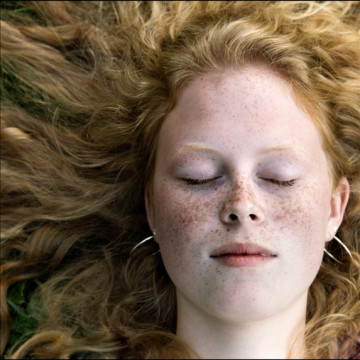As I get older, sleep has increasingly become a priority in my life. With professional deadlines constantly looming and an ever-growing list of social obligations, a good night’s rest is essential for my well-being and sanity.
After many years struggling to develop a solid sleep routine, I’ve made a number of environmental and holistic changes which have helped my bouts of insomnia tremendously. Whether your sleep issues are related to stress, anxiety, or something else completely, I highly recommend trying out some of these tips to enjoy a more restful slumber.
1. Infuse your bedroom with lavender.
If you’re dealing with mild insomnia, it’s worth incorporating this purple plant to your nighttime routine. Studies have shown that lavender–with its robust floral scent–can aid with conditions such as insomnia, anxiety, stress, and pain after surgery. Lavender has been shown to slow the activity of the nervous system and promote relaxation, which are two essential factors in getting a good night’s sleep. This plant may be sold fresh, dried, as an essential oil, and as a pillow or room spray. I have multiple vases of dried lavender throughout my room, and I love that my pillows and blankets are lightly infused with this distinct scent.
2. Eliminate electronics.
You’re probably heard this before, but it bears repeating: remove all unnecessary electronics from your room when you go to sleep. It can be so tempting to leave a phone nearby in case you get a text from your ex or to read an email from your boss, but it’s simple presence can also induce a lot of anxiety.
A study at the University of Basel found that subjects who were exposed to blue light (the light emitted by smart phones, computer screens, iPads, etc.) experienced a more restless sleep than those who were exposed to no blue light. Neuroscientists have discovered that our eyes contain light-sensitive cells that contain a photopigment called melanopsin, which is particularly sensitive to blue light. Because our eyes see so much blue light during the day, too much exposure during the nighttime hours confuse our bodies’ natural rhythm and increase alertness.
3. Purchase a white noise machine.
A white noise machine was probably the single best purchase I’ve made in the past couple of years. While some people actually find that white noise actually disrupts their quality of sleep, I find that it’s steady drone helps me fall and stay asleep. If you’re a light sleeper like me, a white noise machine is particularly helpful if you have roommates that come in late at night or live in a city with lots of outside noise. If you think white noise might help promote better sleep, I recommend investing in an actually machine like this one as opposed to using an app or website since both emit blue light.
4. Meditate before sleep.
In one clinical trial published in the journal JAMA Internal medicine, researchers found that mindfulness meditation helped to promote sleep quality in subjects with moderate insomnia. Meditation helps soften the mind and settle the brain’s arousal symptoms, both of which are necessary for quality sleep.
Personally, I find that meditating during the morning is a great way to begin the day with a sense of calm and peace, but it doesn’t necessarily effect my sleep patterns. However, I find that if I do a 5-10 minute meditation right before sleep, I fall asleep more easily and wake up less throughout the night.
5. Don’t go to bed hungry.
We’re often told that we should go to bed a little hungry, that it helps us metabolize our food and sleep better. Based on my experience, the converse is true; I find that going to sleep comfortably (but not overly) full fosters a good night’s sleep. If I have a lighter dinner, I’ll often find myself tossing and turning all night, waking up at 6am with a growling tummy.
What are your tips for a better night’s sleep? Please share!
Related: Bedtime Routine for Your Best Beauty Sleep
Also by Molly: Are You Apologizing Too Much? A Challenge
Get more like this—sign up for our daily inspirational newsletter for exclusive content!
__
Photo: Annemiek van der Kuil via Flickr




